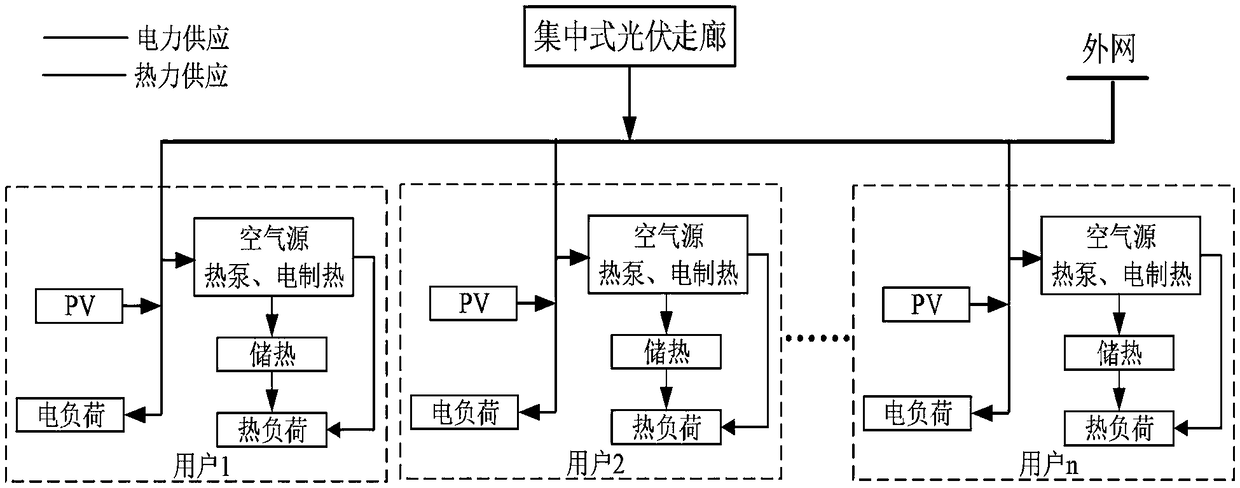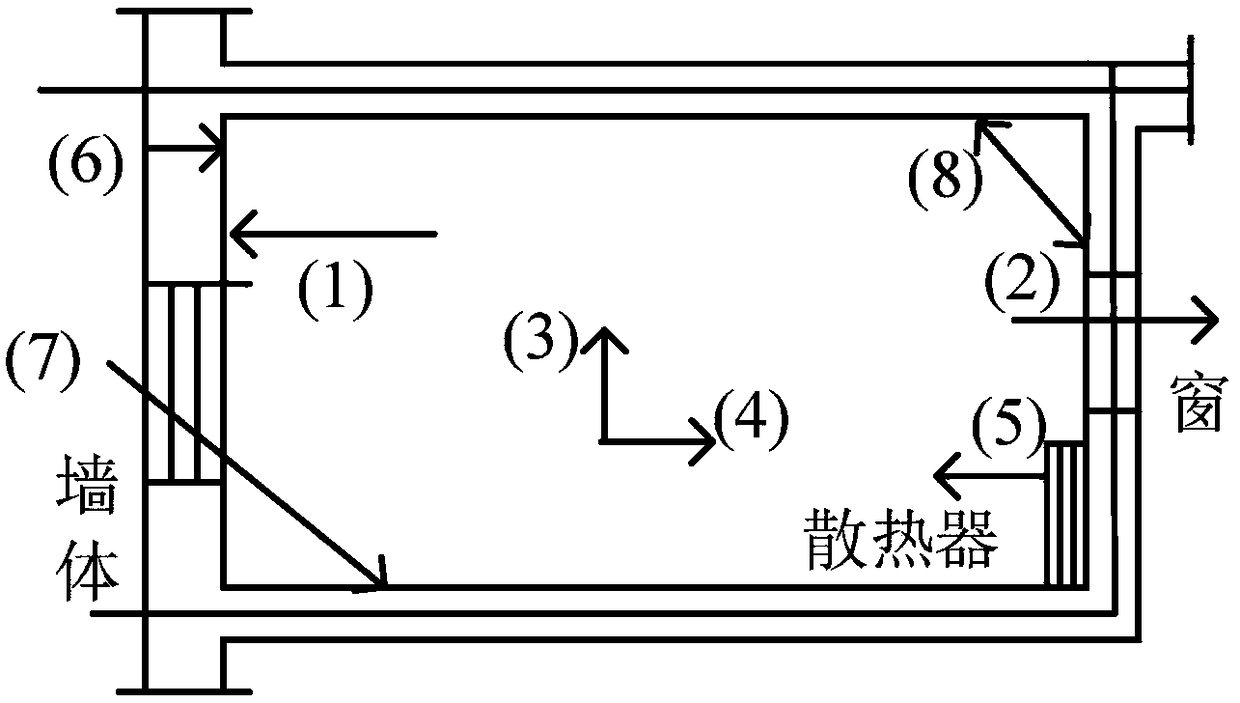Photovoltaic absorbing method for rural micro-energy grid considering building thermal balance and comfort
A heat balance, micro-energy technology, applied in photovoltaic power generation, sustainable buildings, renewable energy integration, etc., can solve the problem of difficult to accurately reflect the demand for heating heat in buildings, without considering building dissipation and thermal inertia, and not meeting the needs of users. energy characteristics and other issues, to achieve the effect of promoting the utilization efficiency of micro-energy network resources, promoting further promotion, and solving the problem of grid consumption
- Summary
- Abstract
- Description
- Claims
- Application Information
AI Technical Summary
Problems solved by technology
Method used
Image
Examples
Embodiment Construction
[0060] The photovoltaic accommodation method of the rural micro-energy network considering the thermal balance and comfort of the building of the present invention will be described in detail below in combination with the embodiments and the accompanying drawings.
[0061] The photovoltaic consumption method of the rural micro-energy network considering building heat balance and comfort of the present invention includes the following steps:
[0062] 1) Establish the overall structure of the rural micro-energy network, such as figure 1 As shown, including: household-level decentralized electric heating supply system and village-level photovoltaic centralized access and coordinated power supply system. The household-level distributed electric heating supply system is used to meet the power supply and heating demand of single houses, including: air source heat pump, electric heating equipment, heat storage equipment, and roof photovoltaic; the electric energy generated by roof ph...
PUM
 Login to View More
Login to View More Abstract
Description
Claims
Application Information
 Login to View More
Login to View More - R&D
- Intellectual Property
- Life Sciences
- Materials
- Tech Scout
- Unparalleled Data Quality
- Higher Quality Content
- 60% Fewer Hallucinations
Browse by: Latest US Patents, China's latest patents, Technical Efficacy Thesaurus, Application Domain, Technology Topic, Popular Technical Reports.
© 2025 PatSnap. All rights reserved.Legal|Privacy policy|Modern Slavery Act Transparency Statement|Sitemap|About US| Contact US: help@patsnap.com



